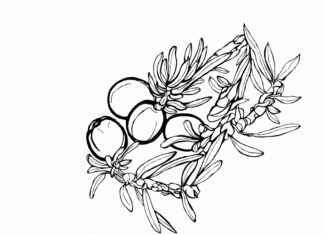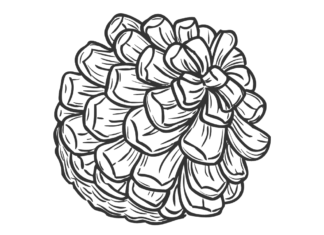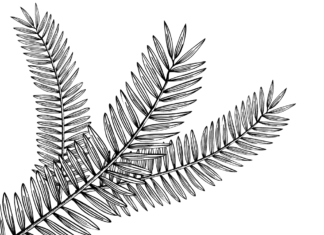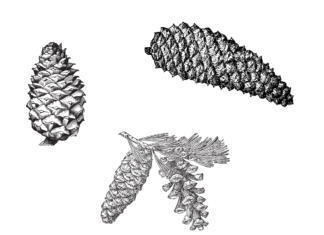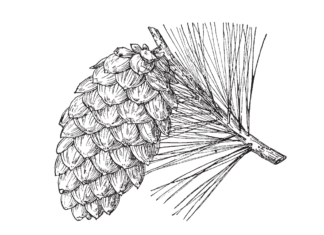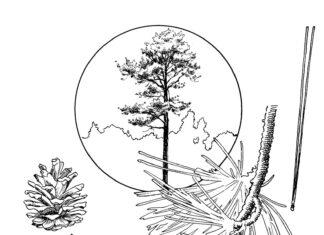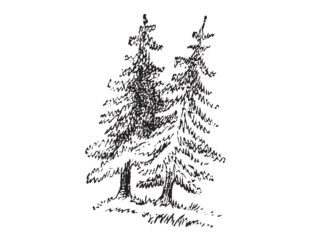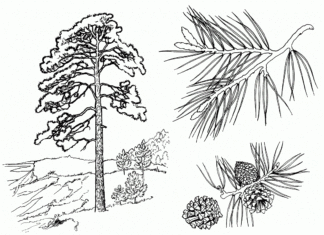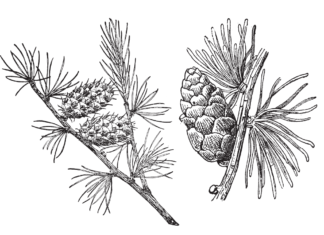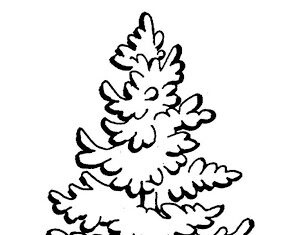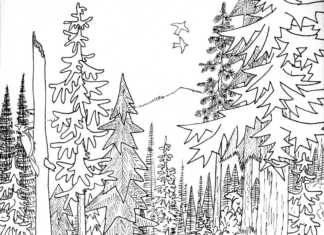Conifers are a group of trees characterized by coniferous, usually evergreen needles and adaptations for life in a variety of climatic conditions.
Needle Trees Coloring Book
.
.
information
- Species: Coniferous trees belong to different genera and species. Some of the popular species are pine, spruce, fir, cedar, cypress, tuja and larch.
- Needles and leaves: A distinctive feature of conifers is their needles. Needles are modified leaves that have been left reduced to reduce water loss by transpiration. Needles are usually narrow, hard and evergreen, which means they remain on the trees all year round.
- Crown form: Coniferous trees can have different crown forms, depending on the species. Some have conical crowns, while others are more rounded.
- Application: Coniferous wood is valued in the construction, carpentry and furniture industries. It is also used in paper production.
- Ornamental use: Many conifers are planted as ornamental trees in parks, gardens and recreational areas.
- Soil Conservation: Coniferous trees can help protect soil from erosion because their roots are often deep-rooted.
- Mixed forest: In some forests, coniferous trees are mixed with deciduous trees, creating so-called mixed forests. These forests can have more diverse ecosystems and offer different habitats for plants and animals.
- Frost resistance: Many conifers are adapted to harsh climatic conditions, including low temperatures and heavy snowfall.
- Resin production: Some coniferous trees, such as pines, can produce resin that has a variety of uses, including in the production of varnishes, adhesives and medicines.
- Mountain ecosystems: In mountainous areas, conifers are often found at high altitudes, where climatic conditions are more difficult for other types of plants.
- Pests: Coniferous trees can be susceptible to attacks by pests such as bark beetles, which can cause significant damage to tree populations.
trivia
- The oldest coniferous tree: One of the oldest known conifers is the Bristlecone fir, which grows in the Great Basin mountains of the United States. The oldest specimen, named "Prometheus," was about 4,900 years old before its death by logging in 1964.
- The tallest coniferous tree: One of the tallest coniferous trees is the high-mountain sycamore (Pseudotsuga menziesii var. menziesii), reaching about 100 meters in height.
- Role in Indian culture: Coniferous trees, such as the pinyon pine, were important in the culture of the Indian tribes of North America. Indians used pine nuts as food and for ceremonial purposes.
- Christmas symbolism: Spruce and fir trees are often used as Christmas trees at Christmas. This custom dates back to the 19th century and has its roots in German tradition.
- White and Red Mountains: In the Polish Tatra Mountains we can find two characteristic coniferous species: fir in the Western Tatras (White Mountains) and spruce in the High Tatras (Red Mountains).
- Rainforests and conifers: Although conifers are more associated with cool climates, some species, such as kauri (Agathis australis), also grow in tropical rainforests.
- A variety of forms and shapes: Coniferous trees come in a variety of forms, from conical to columnar. They also have a variety of needle colors, from intense green to blue-gray.
- Pine trees vs. humidity: Pine trees emit chemical compounds called pine aerosols, which affect air quality and can affect condensation clouds.
- Coniferous forests vs. fires: Some conifer species, like pines, are adapted to survive forest fires. Their cones open as a result of heat, releasing seeds that can germinate in fires.
- Impact on land: Needles falling from conifers can acidify the soil, affecting the chemical composition and pH.

